- Piezo Sound Generator (PSG)
- 1. Product Type
- 1.1. HPA series· Unsealed structure and non-washable
· With pin, wire or connector
· Self driven / non-self driven*
1.2. HPM series
· Sealed structure and washable
· With sealing label
· Wave soldering compatible
· With pin, wire or connector
· Self driven / non-self driven*
1.3. HPS series
· Surface mount (SMD)
· Reflow compatible
· Tape and Reel Packaging
· Self driven / non-self driven*
- 2. Part Numbering System
- e.g. HPS16A– Surface Mount type (SMD), Length 16mm, Series A
|
HPS
|
16
|
A
|
|
Type of PSG
|
Dimensions of PSG
|
Series Number |
*For self drive type PSG, letter X is indicated at the end of series number.
3. General Characteristics
· Rated Frequency – 3 to 5 KHz
· Current Consumption – 0.1 to 5 mA
· Rated Voltage – 3 to 80 Vp-p
· Size – 10 to 60 mm in diameter
· Loudness – 75 to 120 dB A
· Mounting – Pins, Wires/Connectors, SMD
· Low to High Cost
- 4. Principle of PSG
- The sound source of a piezoelectric sound component is the piezoelectric diaphragm. The piezoelectric diaphragm (bender plate) consists of a piezoelectric ceramic plate, with electrodes on both sides, attached to a metal plate (brass, stainless steel etc) with conductive adhesive.The sound is created from the movement of the metal plate. Applying a D.C. voltage between electrodes of the piezoelectric diaphragm causes mechanical distortion due to the piezoelectric effect. The distortion of the piezoelectric ceramic plate expands in the radial direction causing the metal plate to bend. Reversing the polarity of the D.C. voltage causes the ceramic plate to shrink, bending the metal plate in the opposition direction. When A.C. voltage is applied across the electrodes, the diaphragm alternates bending in the two directions. The repeated bending motion produces sound waves in the air.
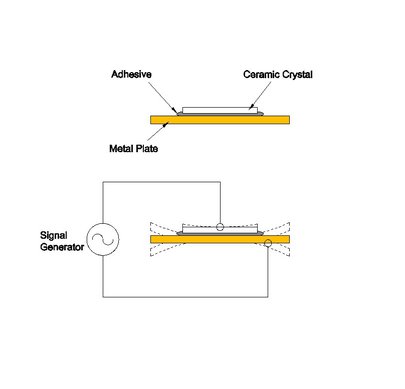
Fig. 1 Working principle of PSG
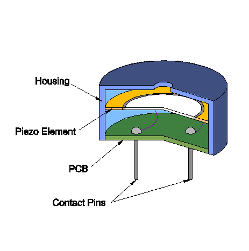 Fig. 2 Internal Configuration of a simple PSG
Fig. 2 Internal Configuration of a simple PSG
- 5. Frequency Response
- SoniCrest external drive PSGs are designed to produce sound according to the frequency of the drive signal applied. The frequency response data given for each PSG is a measure of the effectiveness with which PSG reproduces the different frequencies applied. Frequency response varies from type to type, it is therefore essential to select an appropriate PSG which will meet the specific requirements of the application. All frequency response data given is measured with a square wave voltage signal, it should be noted that SoniCrest PSGs may not produce the same frequency response as specified if they are driven with any other wave form.
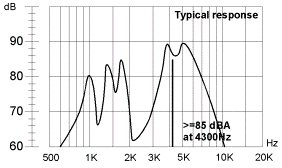
Fig. 3 Typical Response of PSG
- 6. Sound Pressure LevelThe term Sound Pressure Level (SPL) is used to define the loudness or intensity of sound. There are many external factors that can influence the measurement of SPL. Thus, when we report SPL, measuring distance always is included. Typical measuring distance of PSGs is 10cm or 30cm.
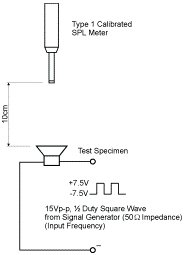
Fig. 4 Test setup for PSG
- 7. Rated Frequency
- Rated frequency is recommended operating frequency at which optimum SPL can be achieved. Unexpected SPL may be obtained if the PSG does not operate at rated frequency. The rated frequency of SoniCrest PSG is usually from 3kHz to 5kHz.
- 8. Rated Input Voltage / SignalDrive signal with a DC bias (Vo-p) is not recommended because it will change the magnetic force direction which can deviate the resonance frequency from its original point and so variations of SPL may be obtained.

 Typical input signal of EMSG (Vo-p)Typical input signal of PSG (Vp-p)Fig. 5 Driven signal of PSG(Vp-p)
Typical input signal of EMSG (Vo-p)Typical input signal of PSG (Vp-p)Fig. 5 Driven signal of PSG(Vp-p)9. Maximum Rated Current Consumption
The rated current consumption designated as Max – mA in the specifications represents the maximum value of the mean current that will flow when the rated voltage is applied with no limitation to current supply. It is not the maximum allowable current that may be applied to the device, in practice the peak may be 2 or 3 times the mean current. It is therefore essential to ensure the supply circuit is capable of providing sufficient current, otherwise the sound pressure level may not reach the specified output.
- 10. Recommended drive circuit
- 10.1. With Built-in Oscillator Circuit (Self Driven)
- The diaphragm has a feedback tab on one of the electrodes that is used in closed loop Hartley types of oscillation circuits. When the circuit is closed to the resonant frequency, the conditions for oscillation are met and the diaphragm produces a single high pressure tone. This type of drive procedure will produce only one tone but will have the highest SPL possible from the PSG. There are some self drive SoniCrest PSGs with selectable tone capabilities, please ask for details.
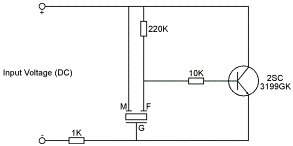
Fig. 6 Recommended Drive circuit for PSG (Self Driven)
- 10.2. Without Built-in Oscillator Circuit (Non-self Driven)
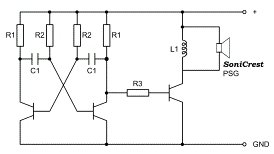
Fig. 7 Recommended Drive circuit for PSG (Non-self Driven)
11. Application
· Alarms
· Sirens
· Portable Handheld Devices
· Industrial/Household Appliances
· Control Modules
· High End Toys
· Medical Instruments